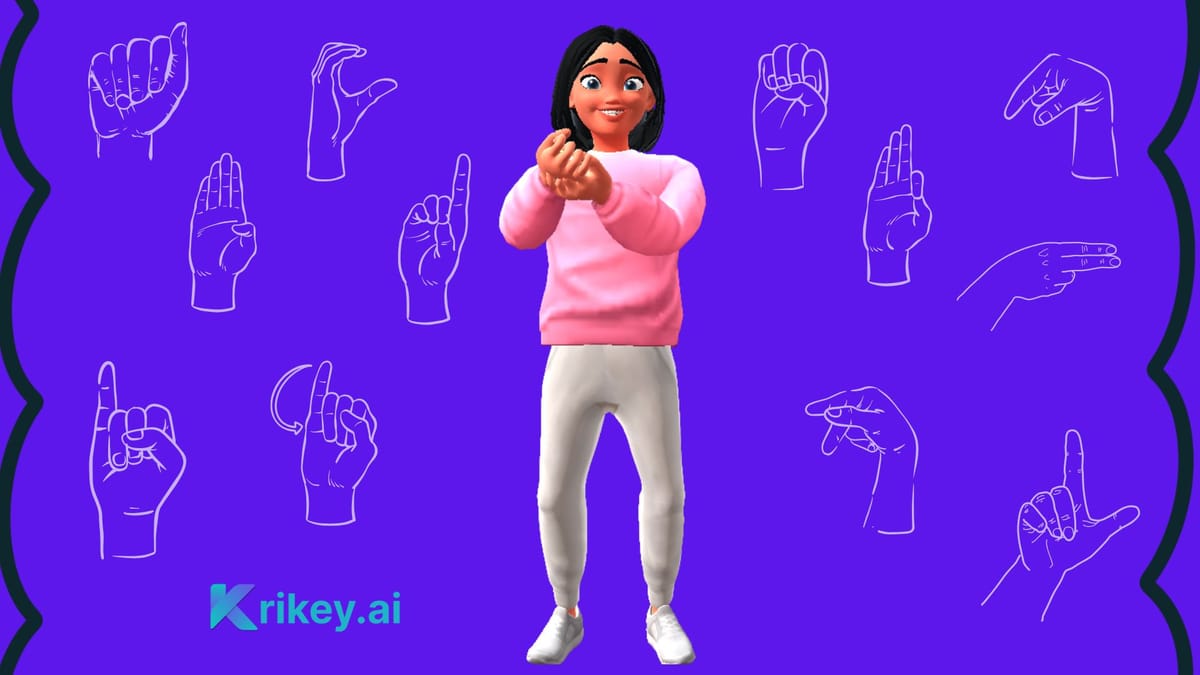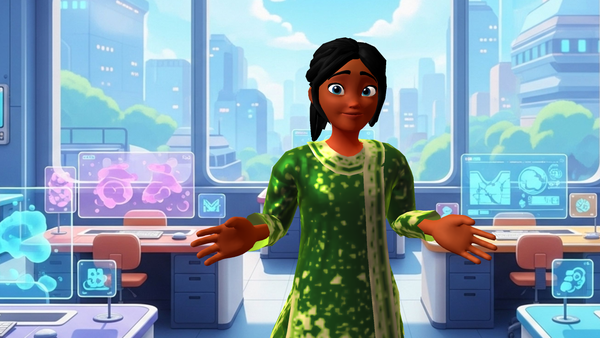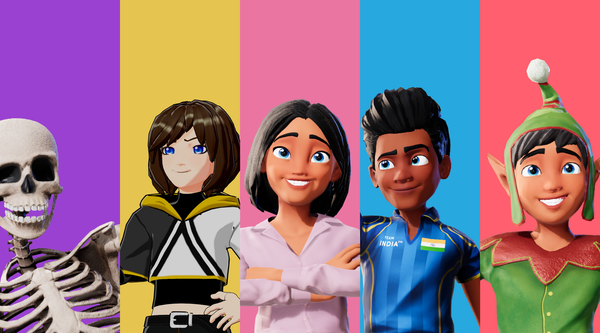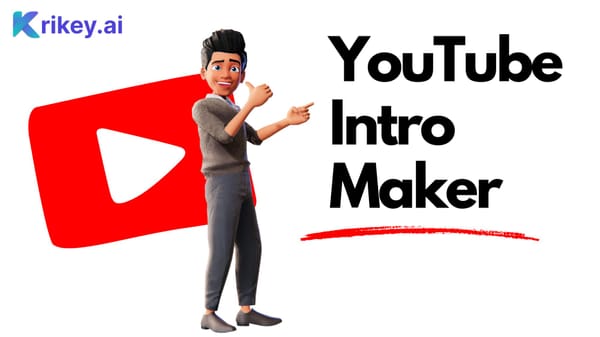How to Make Sign Language Cards with Animation
Make sign language cards with animation and cute cartoon characters. Create your own custom characters and design unique sign language cards that make learning fun!

Introduction to Sign Language Cards
Sign Language Cards are a simple yet effective tool to introduce and reinforce basic American Sign Language (ASL) vocabulary. These visual learning aids combine illustrations of hand signs with corresponding English words to make communication more accessible. Whether for beginners, children, educators, or parents, sign language cards offer a tangible way to practice and retain essential ASL phrases.
Why Use Sign Language Cards for Learning ASL
Learning ASL can be a powerful skill, and Sign Language Cards offer a practical solution for learners of all levels. The visual representation of gestures makes it easier to connect the motion with its meaning. Cards help reinforce memory through repetition and are perfect for learners who benefit from hands-on and visual learning styles. They're also a great supplement to digital tools and classroom environments, allowing consistent and portable access to ASL practice.
Types of Sign Language Cards Featuring Related Phrases
When choosing or designing sign language cards, including core phrases can help learners develop conversational skills. These essential cards support both individual learning and group instruction.
Thank You
Learning how to say thank you in sign language is one of the first steps toward courteous communication. The gesture involves touching the fingers to the chin and moving the hand forward.
How Are You
The phrase how are you in sign language is a great way to start a conversation. It often involves two signs: “how” followed by “you,” with a simple motion of the hands.
I Love You
The I love you in sign language card is both symbolic and meaningful. It's shown using a combination of the letters I, L, and Y from ASL fingerspelling.
Hi/Hello
To say hi in sign language or hello in sign language, learners can use a simple wave motion starting at the forehead—easy to remember and teach.
Please
The card showing how to say please in sign language features a circular motion over the chest with the flat hand. It's often taught alongside thank you and sorry.
Sorry
How to say sorry in sign language involves making a circular motion over the chest with a closed fist. It’s a foundational card for expressing remorse or apologies.
No
How to say no in sign language is often done with a simple tapping gesture involving the thumb and fingers. This card is especially useful when teaching children or beginners.
Yes
How to say yes in sign language make a fist with your dominant hand and move it up and down, mimicking the motion of a head nodding "yes." It's a simple and commonly used gesture, easy to learn and understand. This motion conveys agreement or affirmation, just like saying "yes" out loud.
General Learning
A foundational card that covers how to do sign language can guide users through posture, hand shapes, and the importance of facial expressions in ASL.
How to Design Effective Sign Language Cards
Effective Sign Language Cards follow a few key design principles. First, the hand sign must be clearly illustrated with minimal distractions. Use bold lines and ensure hand orientation is easy to interpret. Each card should include the English word, and optionally a phonetic spelling or contextual sentence. Durable materials such as laminated cardstock or plastic make the cards long-lasting for classroom or home use. Ideal sizes are typically index-card dimensions for ease of handling by both adults and children. With modern tools you can create sign language cards with AI Animation software like Krikey AI.
To access the sign language animations in Krikey AI, you can go to their website and enter the free video editor. Type in a prompt, for example "Sign Language Video" and then click 'Create'. Then go to the left hand bar and click animations and search 'Sign Language'. Here you can browse all the animations in our Sign Language animation pack for Sign Language Cards.
Within the Krikey Video editor you can create your own Free AI Avatar and also animate non-human characters like an animated Unicorn, a cartoon taco or a dancing skeleton. You can also generate your own animations using our AI Video to Animation tools and then use our cartoon hands tool to change the hand gestures within the animation for specific sign language words and phrases.
How to Use Sign Language Cards Effectively
Using sign language cards is about more than memorization—it’s about active practice. Incorporate them into daily routines by labeling objects around the home or classroom. Use cards for flashcard drills, sign-and-say games, or matching exercises. When teaching children, use engaging methods like animation, storytelling or role-play using the phrases on the cards. Repetition is key: using cards multiple times per day helps embed gestures into long-term memory.
Where to Find or Create Sign Language Cards
There are multiple ways to access or build your own Sign Language Cards:
- Free printables: Many educational websites offer downloadable sign language cards with common phrases.
- DIY tools: Use tools like Krikey AI's animation and avatar creator to generate custom ASL illustrations or short videos. You can convert these into personalized animation cards.
- Online marketplaces: Etsy, Teachers Pay Teachers, and other platforms feature ready-made card sets for different learning levels.
- Custom animation tools: Krikey AI allows users to create animated characters that can demonstrate signs in video form, useful for digital learning cards.
Final thoughts on Sign Language Cards
Sign Language Cards are more than just flashcards—they’re a bridge to inclusive and expressive communication. Whether you're learning ASL for fun, education, or accessibility, these cards offer a structured and visual path to fluency. With tools like Krikey AI, you can take your cards to the next level with custom animations and interactive designs. Start simple, stay consistent, and soon enough, you’ll be signing with confidence.
Frequently Asked Questions (FAQs) About Sign Language Cards
These are frequently asked questions about sign language cards.
What are sign language cards used for?
Sign language cards are used to teach and reinforce ASL vocabulary through visual and textual cues. They’re ideal for learners of all ages.
Can I use sign language cards to teach children?
Yes! Sign language cards are particularly effective for children because they combine imagery and movement to support early communication skills.
Where can I find free sign language cards?
You can find free printables on educational blogs and nonprofit websites. You can also create custom sign language cards using Krikey AI’s animation tools.
How do I say thank you in sign language with a card?
The thank you card should show the hand gesture from the chin outward. Pair it with the word “Thank you” for clarity.
What’s the easiest way to start with sign language cards?
Start with cards featuring common greetings like “hello,” “thank you,” and “I love you.” Use them in daily interactions for practical reinforcement.
How can I use Krikey AI to make sign language cards?
Use Krikey AI to animate avatars demonstrating ASL signs. Capture these animations as visuals for digital or printed cards.
Are sign language cards only for ASL?
Most are based on ASL, but you can customize cards to reflect other regional sign languages using AI tools like Krikey’s.
How many cards should a beginner use?
Start with 10–15 essential phrases. As learners progress, expand the set to include verbs, adjectives, and full sentences.
Can sign language cards be digital?
Yes, digital versions can include animated gestures using tools like Krikey AI, which can improve learning through visual motion.
What should be included on a sign language card?
Include the hand gesture illustration, the English word, and optional pronunciation or context. Simplicity is key for clarity.




